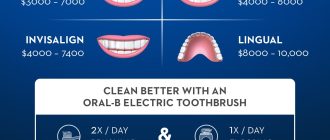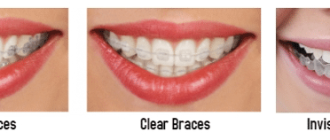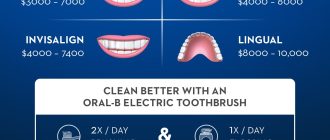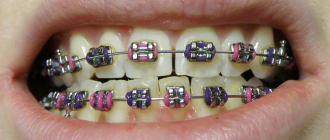The cost of tooth extraction depends on a variety of factors including the number of teeth being removed, whether the teeth are being replaced by a bridged or other replacement method, the location and the dental clinic. Simple tooth extractions are performed by dentists, whereas more technical surgical extractions must be performed by a maxillofacial and oral surgeon.
The average cost of having teeth removed ranges between $100 and $300 per tooth, but can be as low as $75 in some areas. It is one of the most dreaded dental procedures since it involves moderate to severe pain and weeks of healing. Teeth may need to be extracted for a number of reasons such as damage or decay where the tooth cannot be restored. Patients may also choose an extraction where restoration or trying to save the tooth would require extensive and expensive treatment.
What’s included in the Cost of Tooth Extraction?
Before having a tooth removed, you will be required to attend a consultation with your dentist in order to have your teeth examined. The dentist will take x-rays and assess your dental and medical history. This helps to determine whether the tooth can be saved or whether it needs to be removed. At the examination, you will be provided with information about the procedure, how to prepare for it and what to expect afterward.
The cost of the initial exam ranges between $50 and $140 with the x-rays costing around $15 to $135. These prices may be included in the overall cost of extraction. At the initial consultation ask your dentist for a full quote including all fees and charges so you will know the total price. An all-inclusive quote should include full removal of the tooth, thorough cleaning of the area and in some cases, a follow up visit to see how you’re healing is progressing. Typically the procedure involves local anesthesia with injections. If sedation is required, this may cost $200 to $400 extra.
Additional Costs involved with Tooth Extraction
Some dental clinics offer an optional treatment of platelet rich plasma (PRP) which assists in accelerating the healing time following tooth removal. Since tooth extraction can be very painful with healing periods of around six weeks, some patients opt for this new procedure to speed up their recovery. This can add an additional cost of $300 to $400 to the extraction and is not covered by insurance. It is an optional extra available for those patients who don’t have the time or pain threshold to deal with post extraction downtime.
Your dentist or oral surgeon may also suggest that you have the teeth which are being removed replaced in order to maintain your dental health and hygiene. There are numerous options for replacing extracted teeth. However, in some circumstances replacement may not be possible without first repairing the current state of your teeth or gums.
For example, where the teeth are crowded, crooked or unevenly spaced, you may first need straightening treatment before bridges can be attached. This would add an additional $4,000 to $10,000 for the cost of braces to the total amount required to correct your dental conditions. In other instances the patient may need root canal surgery before placing a crown to anchor a bridge or partial denture. In other situations, bone or gum tissue may need to be replaced.
Once the dental problems have been fixed through orthodontics, oral surgery, endodontics or periodontics, the gap can be filled using a variety of methods. Where one or two teeth have been removed, they may be replaced with a bridge which is anchored by crowns on the adjacent teeth. An immediate denture is a more expensive option where the denture is fitted immediately after the teeth are extracted and usually requires replacement within a year.
Another option is a removable partial denture that fits onto two or more remaining teeth. Alternatively, where the patient already has dentures in place, this can be relined with acrylic in order to adjust to the new shape of the gums. Crowns can be implanted with two metal posts inserted into the upper or lower jaw. Where the patient has all upper or lower teeth extracted or missing, these may be replaced with complete dentures.
These additional options may or may not be a necessity, depending on your individual case. Where such treatments are medically necessary as opposed to cosmetic only, insurance may cover some of the cost of these replacement techniques. Otherwise, having extracted teeth replaced will add more costs (sometime thousands of dollars) to the extraction procedure.
Simple Tooth Extraction Cost
Where the tooth can be removed by a dentist without surgical intervention, this can cost around $100 to $150. It involves the dentist anesthetizing the area with a swab followed by a number of local anesthetic injections. Once the area is numbed, the dentist peels the gum away from the tooth. This prevents the gums from being torn when the tooth is pulled out.
A pair of pliers is used to wiggle the tooth in a number eight pattern. The dentist will rotate the tooth in this pattern until they assess that it’s ready for pulling. Once the tooth is removed, the doctor thoroughly cleans the area and firmly presses the gum tissue into the hole in order to facilitate healing. A wet rolled up cotton gauze is placed over the extraction site, which you will be required to bite down on for about half an hour to encourage a solid blood clot.
A risk involved is that the tooth may break whilst the pliers are being used to pull the tooth. If this occurs, additional costs may be incurred where surgery is involved in order to fully extract the tooth.
Surgical Tooth Extraction Cost
In some cases, the patient requires surgery in order to fully remove the tooth. This is needed for example where the tooth is broken off at the gum line, costing approximately $150 to $300. If a tooth is partially impacted, this requires an incision to be made into the gums and costs around $200 to $350.
More complicated surgery is needed where the tooth is covered by bone. This procedure can cost anywhere between $400 and $600 or more. If the tooth is deep inside the bone and not accessible, normal extraction is not possible. To remove the tooth, a sharp scalpel is used to incise the gums. The gum is peeled away to expose the underlying bone. The bone covering the tooth is then uncovered to reveal the hidden tooth to allow for removal. Once the tooth is removed, the gums are put back in place and the wound is sealed with sutures. These are removed a week following the surgery. This process is much more involved than a simple tooth extraction, hence the increased cost.
Cost of Extracting Wisdom Teeth
Wisdom teeth may lay dormant for many years before requiring extraction. Some may never need removal if they don’t cause the patient any problems. Where the teeth are fully erupted, extraction can cost around $200 to $350. Patients may need one or all four teeth removed. Where all four molars need to be removed, this can increase the cost to $800 to $1,400.
Costs can intensify where the wisdom teeth are partially or completely impacted. This means they are not erupted from the gum and in some cases growing horizontally toward adjacent teeth. Removing impacted wisdom teeth can be very pricey, costing around $350 to $700 per molar or up to $2,800 for all impacted molars. Insurance will only pay where the tooth extraction is medically necessary and won’t cover any costs where the procedure is being done for cosmetic purposes only.
Cost of Tooth Extraction with Insurance
Dental coverage can be included with some health insurance plans. Where an insurance policy does cover dental work, the amount allowed to be claimed for such services is typically limited to around $1,000 per year. Whilst insurance will cover approximately 70 to 80% of the dental costs, this may not be sufficient for more complicated tooth extractions, especially where the teeth need to be replaced or with impacted wisdom teeth.
If you only need a simple extraction or even a complicated extraction of one wisdom tooth, then having insurance coverage is definitely worthwhile. Where more complicated issues are concerned, you may need alternative or additional options for financing your dental treatment such as personal loans or discount plans. In most cases insurance companies also have a required probationary or waiting period of 6 to 9 months before you can claim for any dental treatment.
Reducing Tooth Extraction Costs
Many dental providers are members of discount programs such as Ameriplan. With these types of plans, patients can sign up for monthly payments in order to receive significant discounts from member providers. Tooth extractions are one of the many procedures which are offered in numerous locations and offer discounts of approximately 60 to 70%. So, instead of paying $100 to $150 for a simple extraction, under these plans you would pay only around $30 to $90.
The benefit of these programs is that you can seek treatment and claim the discounts the same day as you are approved for membership. However, the cost of tooth extraction is not one of the discounted procedures in some locations under these plans. Before you register, read the terms thoroughly to ensure the exact procedure is included in your area.
Another alternative to receiving cheap tooth extraction treatment is to visit a dental college where your treatment can be provided by dental students, dentists receiving advanced specialty training or the faculty. The fees charged by the school will depend on the extent of treatment required and the practitioner undertaking the services.






